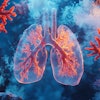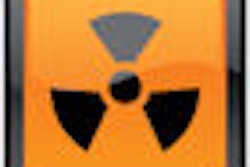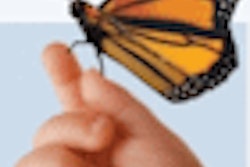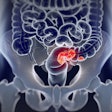A new report published this month offers good news and bad news regarding pediatric CT radiation dose in developing countries. The bad news: Pediatric CT dose varies widely internationally, and some sites have been using adult protocols on children. The good news: Education can spur CT sites to change their ways.
In North America, concern over the use of adult CT protocols on children prompted the launch of the Image Gently campaign in 2008 to promote child-sized imaging techniques. But what about CT users in developing countries? How aware are they of the need for pediatric CT protocols, and how much does dose vary between countries?
The International Atomic Energy Agency (IAEA) in Vienna, Austria, conducted a prospective multinational study to obtain answers to these questions, and to establish baseline data on frequency and dose levels in pediatric CT examinations for future research. Its findings from an investigation of 128 healthcare facilities with CT scanners in 28 developing countries in Africa, Asia, and Eastern Europe were published online in Radiation Protection Dosimetry (February 11, 2010).
The study is one of several undertaken by the IAEA between 2005 and 2008 to improve awareness of radiation from imaging procedures around the world. Madan Rehani, Ph.D., a radiation safety specialist at the IAEA's Radiation Protection of Patients unit, coordinated the project.
Data on frequency of CT exams performed on children younger than 15 years were obtained for all 128 CT facilities surveyed, but patient dose information was not available from 27 facilities in 10 countries. Nonetheless, the researchers documented a high level of radiation dose variability -- as well as the inappropriate use of adult CT protocols in scans of children.
Pediatric CT exam frequency
The research team calculated pediatric CT exam frequency as a percentage of the total number of CT exams performed at an individual facility, and subsequently averaged the frequencies of all participating centers in each country to provide the relative proportion of pediatric exams compared to adult CT exams. The mean frequencies ranged from 0.5% in Bulgaria to 38% in Ghana and Tajikistan.
Participating centers in African countries had the highest percentage of pediatric CT exams at 20%, followed by centers in Asia at 16% and Eastern Europe at 5%. The study's lead author, W.E. Muhogora, Ph.D., senior radiation physics officer of the Tanzania Atomic Energy Commission in Arusha, and research colleagues attributed this to alternative imaging modalities, such as MRI or high-resolution ultrasound, frequently being unavailable. They noted that limited experience in justifying CT procedures for children might also explain the disparities among individual centers, as well as among countries.
Radiation dose exposure
The researchers collected dose assessment data for CT exams of the chest, high-resolution chest, lumbar spine, abdomen, and pelvis. Head CT data are still being collected from 11 of the participating countries and will be added to the study when it is obtained.
The dose assessment was performed in terms of weighted CT dose index (CTDIw), volume CT index, and dose-length product (DLP). The values for CTDIw were determined from phantom measurements, from calculations using a CT dosimetry spreadsheet, or by recording the values from the display console of the CT equipment under direct supervision of a researcher. Dose-length product values were calculated using a variety of standard methods.
The weighted CT dose index variations ranged up to a factor of 55 in Africa, 16.3 in Asia, and 6.6 in Eastern Europe. The corresponding DLP variations ranged by a factor of 10, 20, and eight, respectively. Differences in DLP variations were mainly due to differences in CT parameters used, such as pitch and scan lengths. Using statistics from Japan as representative of a country with extensive experience performing pediatric CT scans, the CTDIw and DLP values were lower than the corresponding values in the countries being studied.
During the investigation, the researchers identified 11 CT facilities located in six countries that used adult CT exposure parameters for pediatric patients. IAEA study representatives of each country contacted the staff in each facility to advise and educate them about pediatric CT protocols, Rehani told AuntMinnie.com. A CT center in Thailand subsequently reported to IAEA that it had reduced radiation dose by approximately 53% after adopting the recommended pediatric protocols for a chest CT exam, and a CT center in Sudan reported reductions of 38% to 50% for the same procedure.
IAEA actions
Rehani reported that promoting appropriate pediatric patient dose management programs is a proactive process. Web sites operated by the Radiation Protection of Patients agency and the Image Gently project have a wealth of free information, although he pointed out that hospital staff in developing countries may have limited Internet access.
The IAEA Radiation Protection of Patients unit is establishing a grassroots network for the radiation protection of children throughout the world. The unit has an ambitious schedule of seminars planned and is communicating to its project partners in approximately 70 countries regarding the need to strengthen radiation protection of children. It is conducting training courses in conjunction with the Image Gently campaign, with the first course conducted in February 2010 at Dubai Hospital in the United Arab Emirates.
"A global campaign on justification issues relating to pediatric CTs is planned," Rehani said. "All of these will promote increased awareness of radiation dose management for any medical staff working with CT."
By Cynthia E. Keen
AuntMinnie.com staff writer
February 25, 2010
Related Reading
Image Gently achieves global reach by 2nd anniversary, February 25, 2010
IAEA study finds that interventional dose may be too high, August 5, 2009
IAEA urges scheme to track radiation in patients, April 30, 2009
Image Gently organizers look ahead on one-year anniversary: Part 1, February 9, 2009
Swiss pediatric CT survey leads to national dose standards, October 23, 2008
Copyright © 2010 AuntMinnie.com




















